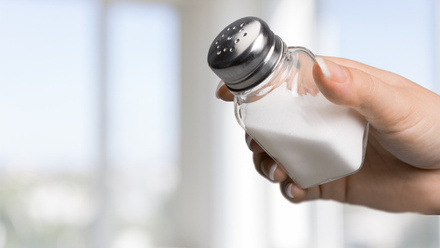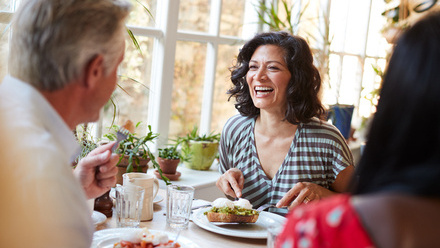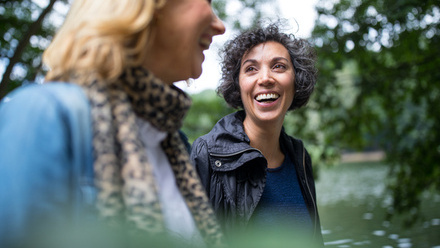Pilates is a popular form of exercise that most of us have heard of but probably don’t know quite what it is. Here, fitness expert Jane Wake explains all you need to know about Pilates, including what it is, how it works and how it can benefit the body.
What is pilates?
Pilates was created by Joseph Pilates, born in Germany in 1883. Described as a ‘sickly child’ he taught himself in anatomy, gymnastics, wrestling, yoga and martial arts and went on to help others improve their health including work in New York, where he famously worked
with Ballet dancers.(1) Today’s Pilates teachers still teach the ethos of what Joseph Pilates originally pioneered - a rehabilitative and holistic practise that works on controlling central muscles whilst working the whole body.
What the research says
Research states Pilates is a form of exercise that can help in the stability/balance of the pelvis and the relief of back pain. Whilst many pieces of research cite huge benefits, it does not show Pilates to be better than other types of exercise, often due to the wide variance in studies that make it hard to compare and judge.(2,3) Research pinpoints 3 areas that make it more effective:
- specificity of the exercise
- the quality of teaching
- frequency in which it’s carried out
Who is pilates for?
In principle it’s for everyone because when taught well, a teacher assesses your needs and makes the class specific to you. Seek out a class subtitled with a specific interest, such as Pilates for Golf or for Prenatal Pilates. If you are looking for a little more mindfulness in your life, Pilates could be just what you are looking for.
After a good Pilates class, you should come away feeling you have learnt something new about how your body works. An even better class will teach you how to use what you’ve learnt in your every day life.
Pilates is a precise, deep and mindful practice and this makes it ideal for specific populations. Pilates can help in back care and many musculoskeletal disorders that involve the back, upper and lower limbs. The workplace, where we often sit for prolonged lengths of time in poor postural, stressed positions, is a breeding ground for musculoskeletal disorders. Recent statistics show work related musculoskeletal disorders represent 44% of all workplace illnesses.4 So whether your issue is in your back, arm, hand or foot, or all of the above, Pilates can help. Pilates also offers benefits for others such as older adults, pregnancy and those in cancer care.(5/6)
So, how does it work?
Pilates movement is fine, specific and centred which is why you sometimes don’t see a lot of movement but you engage muscles deep in the body that you never knew you had. These ‘inner core’ muscles connect to the spine, pelvis, rib and shoulder areas. A good Pilates teacher gets you using these muscles, and many more, with excellent posture, alignment, balance, strength and length, helping you undo bad practices of modern living. A well trained Pilates body looks toned, strong and long with great posture and flexibility. Breathing is at the centre of Pilates, helping you to focus and relax.
What's the difference between pilates and yoga?
Joseph Pilates studied Yoga but there are clear differences. Yoga is lengthening and meditative whilst Pilates tends to be more core muscle focused. In Yoga you are encouraged to ‘belly breathe’ which means allowing the pelvic floor, abdominals and rib cage to ‘let go’. In Pilates you will maintain control throughout, focusing on drawing in with your core muscles on your outbreath. Breathing techniques in Pilates vary and can be ‘controlled’ in different ways.
Can you do pilates at home?
There are plenty of videos and apps that you can download but go along to a class first. Once you understand the principles of Pilates and have had a teacher correct your form, then it’s safe and good to practise on your own. Your teacher can recommend a good resource for you to follow at home.
How often do I need to pilates?
To really feel the benefits of Pilates, attend a class at least once a week. The key to success is to incorporate Pilates into your everyday life and think about how you sit at your desk and how you stand or connect to your core muscles when you are lifting, carrying or doing another activity or sport. The more you connect in this way, the more benefit you will gain.
The two main types of pilates:
Mat work pilates
This is a group class based around the 34 movements that Joseph Pilates documented in his book Return to Life Through Contrology7 , published in 1945. Exercises are mainly performed on all fours, sitting and lying. Only rarely are they taught as systematically as Joseph Pilates originally designed, as many of the exercises are adapted to make them suitable for us today. There’s more practical standing work today as functionally we need to sit less and stand more, but the principles of Pilates remains. Mat Work Pilates is usually taught in groups of eight to 12 participants and in halls and studios. Some Pilates classes carry additional words such as ‘Fitness’ or ‘Cardio’ or Hybrid words such as ‘Piloxing’ or ‘Yogalates’. If you are looking for a class to help with a specific issue such as back pain, ensure the class you attend is a true Pilates class.
Equipment based
Joseph Pilates invented a number of pieces of apparatus, usually using blocks, pullys and springs. Equipment based sessions are either one to one or in very small groups of two to six people. They can be based around one piece of equipment such as the ‘Reformer’ or sessions are taught on multiple pieces of equipment.
Your pilates checklist
- Your teacher should have a ‘level 3’ qualification in Mat Work Pilates. Check registration on the Register of Exercise Professionals at http:// www.exerciseregister.org. This is a non-compulsory register. For equipment-based classes, there’s no standard qualification or register.
- Make sure your teacher has at least one years’ teaching experience.
- If you have a specific health problem, choose a class taught by a teacher specialising in your condition.
- Stick to classes that have no more than 12 people in a class.
- Ask if you can attend for a trial session.
- Make sure you are screened before the start of the class. No one should be able to walk into a Pilates class without being asked their health status.
- Ensure your teacher explains to you exactly what he or she wants you to do. A good teacher will spot when you need help.
- Feel like you’ve done a workout. This means that the teacher has got you to connect properly to your muscles.
- Does the class ‘flow’? A good class will have a clear beginning, middle and end.
- Is the studio/hall comfortable to exercise in? You should feel at ease in the room and feel relaxed and that it’s an inviting environment.







